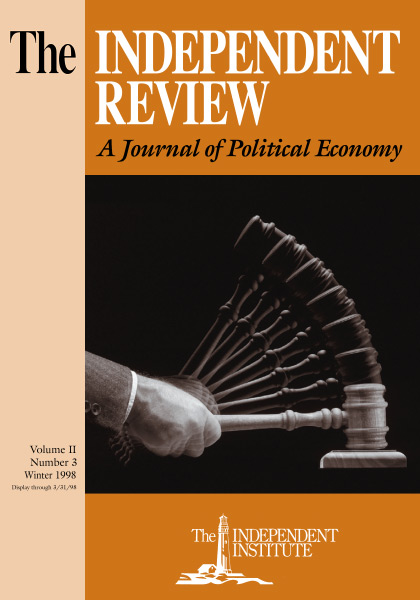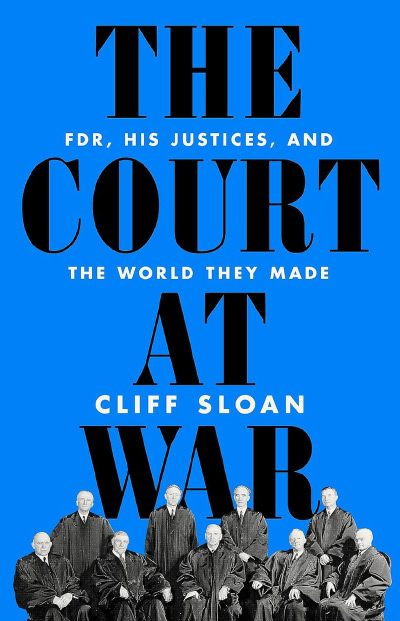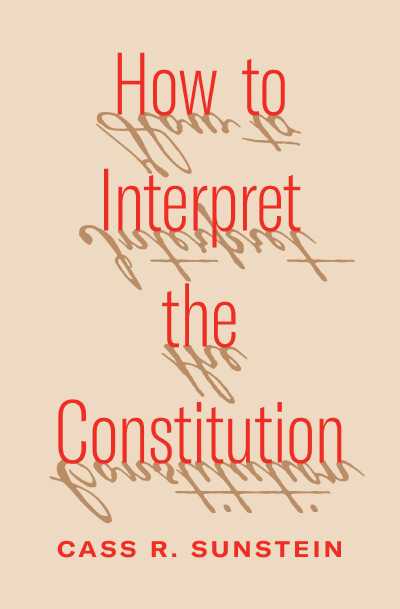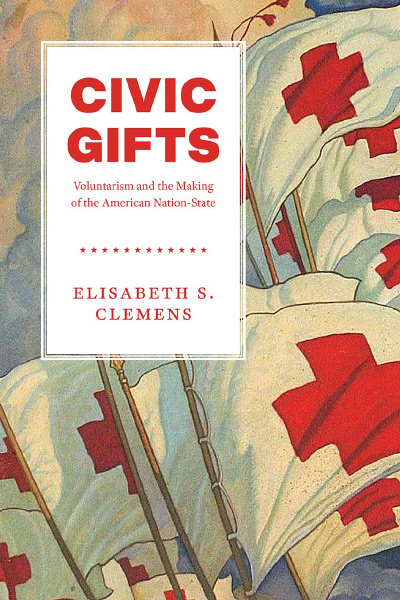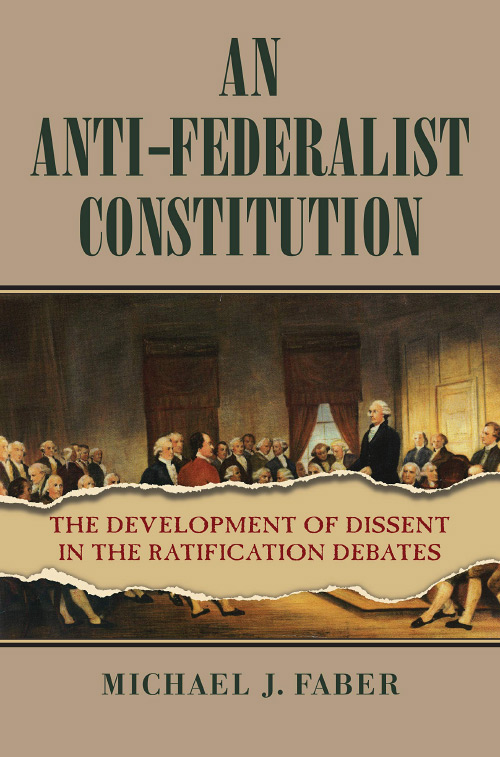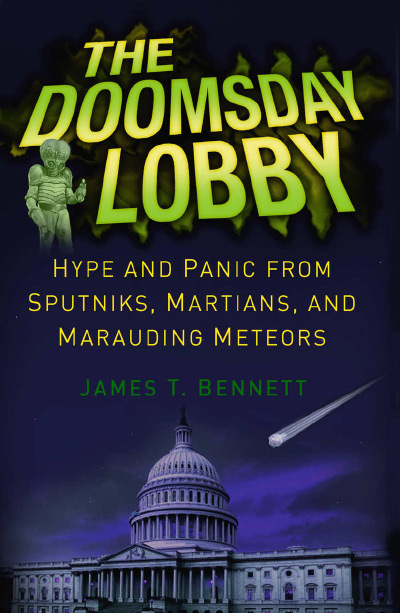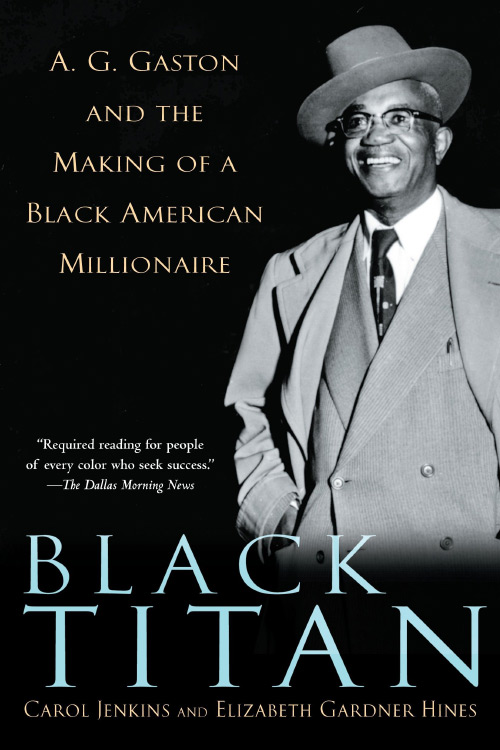Scholars have long agreed that John Marshall occupies a preeminent place in the growth of American constitutionalism. Marshall contributed significantly to constitutional law and cemented the institutional role of the Supreme Court as a coequal branch of government. Yet, despite numerous studies (see, for instance, Herbert A. Johnson, The Chief Justiceship of John Marshall, 1801–1835. Columbia, S.C.: University of South Carolina Press, 1997, and G. Edward White, The Marshall Court and Cultural Change, 1815–35. New York: Macmillan, 1988), Marshall has remained a surprisingly elusive subject for historians. The classic study by Albert J. Beveridge (The Life of John Marshall, 4 vols. Boston: Houghton Mifflin, 1916–19) is marred by both inaccuracies and undue partisanship. To complicate matters, Marshall’s constitutional philosophy has too often been viewed in a simplistic manner designed to validate twentieth-century notions of judicial review and enlarged governmental authority.
Against this backdrop, the volumes under review represent welcome and thoughtful additions to the Marshall literature. The works complement each other. Hobson has written an acute analysis of Marshall’s jurisprudence and craft of judging. Smith has provided a well-balanced biography of Marshall, looking at the many facets of his long career. Both are sensitive to the interplay between legal developments and the political currents of the age.
Relying primarily on Marshall’s judicial opinions, Charles F. Hobson in The Great Chief Justice: John Marshall and the Rule of Law proceeds to dispel a number of stubborn myths that cloud our understanding of Marshall’s tenure as chief justice. He emphasizes that Marshall’s genius lay not in innovative theorizing but in effectively articulating legal principles emanating from the formation of the American Republic. Marshall has long been linked with the assertion of judicial review in Marbury v. Madison (1803). As Hobson points out, however, by that time “the idea that courts could void laws contravening the Constitution was no longer seriously controverted” (p. 55). Not only was Marshall simply affirming a widely shared belief, but Marbury can best be seen as “a strategic retreat by the judiciary” (p. 49) to avoid a political confrontation with the executive branch. Indeed, Hobson maintains that Marshall’s concept of judicial review was both narrow and defensive in nature, designed to safeguard the independence of the courts and to protect the frail national union from aggressive moves by the states. Marshall never made “any claim to judicial supremacy in expounding the Constitution or to exclusive guardianship of the fundamental law” (p. 67); nor did he envision broad judicial supervision of society.
Similarly, Hobson contends that Marshall’s constitutional nationalism, as expressed in decisions such as McCulloch v. Maryland (1819), was not intended to enlarge the powers of the federal government. Rather, Marshall sought to restrict state encroachments on the exercise of legitimate congressional authority. According to Hobson, Marshall’s language “did not signify approval of the idea of an evolving Constitution” (p. 119). In McCulloch, Hobson continues, Marshall “did not intend to suggest that Congress, in addition to its delegated powers, could tap a vast reservoir” of implied powers (p. 123). He was concerned only with the means employed to carry out the enumerated powers of Congress. It is worth noting, moreover, that the ruling in McCulloch upholding the validity of the national bank was hardly a surprise. The constitutionality of a national bank had been extensively debated since the administration of George Washington and was not seen by most commentators as open to serious question.
Hobson also takes aim at the prevalent misreading of Gibbons v. Ogden (1824). Although Gibbons is often cited as authority for plenary congressional power over commerce, Hobson stresses the limited scope of the decision. In fact, Marshall held only that the New York steamboat monopoly violated a federal licensing statute. Marshall defined commerce in broad terms, but he expressly recognized that state police power might affect interstate commerce and left “an ample field for state legislative activity in the area of commerce and the economy” (p. 145). The decision in Gibbons, Hobson explains, “was less about defining the extent of federal power than about setting limits on state sovereignty” (p. 145). The vast expansion of affirmative federal authority under the commerce clause that emerged from the New Deal cannot fairly be traced to Marshall.
Far from championing unbridled judicial activism, Marshall was always mindful of the restraints on judicial power. Hobson points out that Marshall sought to distinguish legal questions from political issues. For example, Marshall repeatedly deferred to the political branches of government in matters pertaining to foreign affairs. Likewise he was cautious in handling politically sensitive slavery cases. Notwithstanding his growing personal distaste for slavery, Marshall was reluctant to second-guess legislative determinations that slavery was lawful. In short, moderation was a key component of Marshall’s judicial philosophy.
Hobson correctly notes that concentration on a handful of landmark constitutional cases tends to produce a skewed picture of Marshall’s jurisprudence. He reminds us that during Marshall’s tenure, the Supreme Court was foremost “an appellate tribunal for adjudicating disputes between private individuals” (p. 151). The bulk of this litigation involved admiralty, contracts, commercial dealings, and contested titles to land. To resolve these cases, Marshall applied principles of common law and equity. Contrary to the arguments of other scholars (see William M. Wiecek, Liberty under Law: The Supreme Court in American Life. Baltimore: Johns Hopkins University Press, 1988, 32–33), Hobson demonstrates that Marshall paid careful heed to precedent and realized that certainty in law was an important value.
As Hobson’s account makes clear, Marshall cannot accurately be seen as a proto-New Dealer or as a herald of the activist Warren Court. Hobson cogently observes that Marshall “was not a precursor of modern liberal nationalism or of the positive, interventionist, regulatory state of the twentieth century” (p. 20). The author presents a powerful rejoinder to those scholars and jurists who have distorted Marshall’s legacy in order to cast a veneer of historical legitimacy over the constitutional revolution of 1937 and the rapid growth of federal regulatory authority.
In contrast to Hobson’s work, Jean Edward Smith in John Marshall: Definer of a Nation does not offer fresh insights into Marshall’s constitutional philosophy. Instead, he has written a readable and comprehensive biography of the chief justice. Smith devotes much of his energy, and nearly half of this hefty volume, to Marshall’s prejudicial career. Thus, Smith discusses in detail Marshall’s family background, legal education, marriage to the often-ailing Polly Ambler, success at the Richmond bar, acquisition of large tracts of land, and early forays into Virginia politics. Disputing the once-accepted notion that Marshall received only a skimpy legal education, Smith demonstrates that Marshall enjoyed superior instruction in law by the standards of the era.
Of particular importance was Marshall’s service in the Revolutionary army. This formative experience left a deep impression on the future chief justice. Marshall came to lionize George Washington, of whom he would later write a sympathetic biography. The wartime experience also convinced Marshall of the need for an effective national government.
An enthusiastic proponent of the new federal constitution in 1787 to 1788, Marshall gradually emerged as the foremost leader of the Federalist Party in Virginia. In the years of the early republic he held a variety of political offices, was part of the delegation to France during the XYZ Affair, and served as secretary of state under President John Adams. For all his achievements in the political arena, chance played a determining role in shaping Marshall’s career as chief justice. When John Jay declined reappointment as chief in January 1801, the lame duck Adams turned to his secretary of state to fill the vacancy. Smith suggests that “the pace of events forced the choice” (p. 15) and that in retrospect “the choice appears inevitable” (p. 278). Adams needed to name promptly a Federalist who would accept the nomination and be confirmed by the Senate; otherwise he would lose the opportunity to select the next chief justice. Marshall was happily at hand.
The early years of the Supreme Court were difficult. The tribunal that Marshall joined in 1801 possessed neither prestige nor authority. Although the Court had rendered a number of significant decisions (see William R. Casto, The Supreme Court in the Early Republic: The Chief Justiceships of John Jay and Oliver Ellsworth. Columbia, S.C.: University of South Carolina Press, 1995), its image was tarnished by the perception that the justices too often acted as partisans of the Federalist Party. Moreover, the justices were required to preside at circuit courts in each state, an onerous task that occupied much of their time.
Smith does a good job of explaining how Marshall set out to strengthen the Supreme Court as an institution. Rejecting the traditional practice of having each justice prepare an individual opinion, Marshall persuaded his colleagues to issue a single opinion. Marshall himself usually spoke for the Court. Yet Smith convincingly insists that Marshall “was the moderator, not the master, of the Court” (p. 402) and that the other justices were not ciphers, but full participants in a process of collective decision-making. Marshall also moved to reduce the partisan image of the Court. Central to this endeavor was his determination to separate legal issues from political questions and to avoid being drawn into dealing with matters best resolved by the political branches. To this end, Smith notes, Marshall was careful to steer clear of needless confrontations with the incoming Jefferson administration.
On a related topic, Smith gives sustained attention to Marshall’s troubled relationship with his second cousin, Thomas Jefferson. The two men were separated by political affiliation and temperament. The convivial Marshall usually maintained friendly ties even with political opponents, but he disliked and distrusted Jefferson. The animosity was certainly mutual. According to Smith, Marshall’s handling of the Burr treason trial in 1807, including the issuance of a subpoena to Jefferson, led to the complete estrangement of the chief justice and the president. Smith argues however, that despite their differences both Marshall and Jefferson pursued an essentially moderate course designed to safeguard judicial independence and remove the Supreme Court from politics.
Smith weaves together the major cases appearing before the Supreme Court, political events of the day, developments in Marshall’s personal life, and Marshall’s dealings with the other justices. There is little sustained legal analysis, but Smith places the significant rulings of the Marshall era in a broad context. With respect to Marbury, Smith agrees with Hobson’s assessment that “Marshall’s assertion of the Court’s authority to declare an act of Congress unconstitutional was not controversial” (p. 324). Likewise, Smith argues that McCulloch was a defensive decision that “did not so much expand federal sovereignty as restrict state sovereignty” (p. 445).
As indicated by the title, a celebratory tone pervades Smith’s work. To be sure, there is much to applaud in Marshall’s life. But one must be careful not to assign iconic status, even to Marshall. Surely George Washington and Abraham Lincoln did as much to define the United States as Marshall. Moreover, the chief justice never concealed his intellectual debt to Alexander Hamilton. Occasionally, Smith makes extravagant claims for Marshall. For example, he declares that Marshall “transformed the Constitution from a compact among the states into a charter of national life” (p. 19). Yet as Smith himself demonstrates, the compact theory of the union was widely rejected before Marshall became chief justice. Notwithstanding fulminations against the chief by Virginia’s Old Republicans, it does not appear that Marshall deserves most of the credit for the demise of the compact theory.
Both authors explore at length the pivotal role of property rights in Marshall’s constitutional philosophy. The framers of the Constitution, of course, saw respect for the rights of property owners as essential for the enjoyment of liberty (see James W. Ely Jr., The Guardian of Every Other Right: A Constitutional History of Property Rights, 2d ed. New York: Oxford University Press, 1997, 42–58). Marshall’s views were fully congruent with this emphasis on property rights. Smith points out that by the 1780s Marshall believed in “the unalienable right to possess, enjoy, and augment private property” (p. 108). He adds: “For Marshall, liberty centered on the right to be secure in one’s property” (p. 116). Hobson makes clear that in addition to the philosophical link between liberty and property, Marshall’s thinking about property ownership had a utilitarian dimension. According to Hobson, Marshall was convinced that “strong constitutional protection for property and investment capital would promote national prosperity” (p. 75).
Not surprisingly, therefore, defense of property rights was one of the prime tenets of Marshall’s jurisprudence. The chief justice relied on the contract clause to safeguard property and contractual rights against abridgment by the states. Hobson explains that in Marshall’s eyes, the contract clause “was the most valuable provision of the new Constitution” (p. 24). Marshall’s broad reading of the contract clause to encompass public contracts, such as state land grants and corporate charters, has generated controversy. A number of scholars have argued (see, for instance, Benjamin F. Wright, The Contract Clause of the Constitution. Cambridge, Mass.: Harvard University Press, 1938) that Marshall enlarged the contract clause beyond the intent of the framers by applying it to public contracts. Both Hobson and Smith emphatically dispute this view. They stress that the contract clause was phrased in general terms and that Marshall was interpreting the clause in a manner consistent with its original meaning. The chief justice simply construed the contract-clause in accord with its language. The authors make a compelling case that Marshall’s contract clause decisions were faithful to the intent of the framers and that other scholars have followed the wrong historical path. Their reasoned conclusions should go far in eclipsing the erroneous but frequently repeated canard that Marshall unduly stretched the reach of the contract clause.
The modern Supreme Court has wandered far from Marshall’s vision of a robust contract clause. Since the New Deal era, the contract clause has been relegated to a distinctly secondary place in the constitutional order. Indeed, Justice John Paul Stevens directly contradicted Marshall when he observed (Keystone Bituminous Coal Association v. DeBenedictis, 480 U.S. 470, 502 [1987]) that “the prohibition against impairing the obligation of contracts is not to be read literally.” The current propensity on the part of justices to downplay the contract clause inverts Marshall’s insistence on the inviolability of contracts. It also underscores how selective, if not unprincipled, is the practice of wrenching Marshall’s nationalistic sentiments from context in order to buttress claims of unlimited federal authority, while ignoring the property-rights focus of his jurisprudence.
In sum, these outstanding volumes deserve the careful attention of all persons interested in constitutional history and the formative years of the American Republic. Hobson’s book will likely become the definitive study of Marshall’s judicial thought. For his part, Smith has written the best modern biography of Marshall.
| Other Independent Review articles by James W. Ely, Jr. | ||
| Summer 2024 | The Court at War: FDR, His Justices, and the World They Made | |
| Fall 2022 | New Democracy: The Creation of the Modern American State | |
| Spring 2015 | The Classical Liberal Constitution: The Uncertain Quest for Limited Government | |
| [View All (12)] | ||

